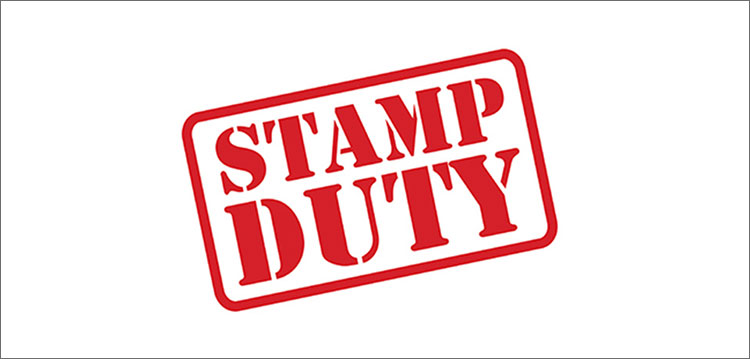E-Waste : A growing concern

By Varun Singh
Advances in the field of science and technology brought about industrial revolution in the 18th Century which marked a new era in human civilization. The 20th Century witnessed information and communication revolutions, which again brought enormous changes in the way we organize our lives, our economies, industries and institutions. These spectacular developments in modern times have undoubtedly enhanced the quality of our lives, but at the same time, have led to manifold problems including the problem of massive amount of hazardous waste and other wastes generated from electric products. These hazardous and other wastes pose a great threat to the human health and environment. The issue of proper management of wastes thus becomes critical to the protection of livelihood, health and environment.
Our daily activities give rise to a large variety of different wastes arising from different sources. Thus, municipal waste is waste generated by households and consists of paper, organic waste, metals, etc. Biomedical waste is the waste generated by hospitals and other health providers and consists of discarded drugs, sharp-wastes, microbiology and biotechnology waste, human anatomical waste, animal waste, etc. Radioactive waste is any material that contains a concentration of radionuclide greater than those deemed safe by national authorities, and for which, no use is foreseen. Other sources of waste include end-of-life vehicles, packaging waste, tyres, agricultural waste, etc.[1] The increased use of electronic products in our daily life has resulted in a new form of waste namely, Electronic-waste or ‘E-waste’.
Composition of ‘E-waste’
Electronic-waste or ‘E-waste’, can inclusively be described as loosely discarded, surplus, obsolete, broken, electrical or electronic devices and consisting of all waste from electronic and electrical appliances which have reached their ‘end-of-life’ period or are no longer fit for their original intended use and are destined for recovery, recycling or disposal. For example it includes computer and its accessories, monitors, printers, keyboards, central processing units; typewriters, mobile phones and chargers, remotes, compact discs, headphones, batteries, LCD/Plasma TVs, air conditioners, refrigerators and many more appliances. The composition of ‘E-waste’ is diverse and can have ‘hazardous’[2] as well as ‘non-hazardous’[3] classifications. Broadly, ‘E-waste’ consists of ferrous and non-ferrous metals, plastics, glass, wood and plywood, printed circuit boards, concrete, ceramics, rubber and other items.”[4] Iron and steel constitute about 50% of the waste, followed by plastics (21%), non-ferrous metals (13%) and other constituents. Non-ferrous metals consist of metals like copper, aluminium and precious metals like silver, gold, platinum, palladium and so on.[5]
Growing ‘E-waste’ concerns
All over the world, the quantity of electrical and electronic waste generated each year, especially computers and televisions, has assumed alarming proportions. In 2006, the International Association of Electronics Recyclers (IAER)[6] projected that 3 billion electronic and electrical appliances would become ‘Waste Electrical and Electronic Equipment’ (WEEE) or ‘E-waste’ by 2010. That would tantamount to an average ‘E-waste’ generation rate of 400 million units a year till 2010. Globally, about 20-50 MT (million-tonnes) of ‘E-waste’ is disposed off each year, which accounts for 5% of all municipal solid waste. As the fastest growing component of municipal waste across the world, it is estimated that more than 50 MT of ‘E-waste’ is generated globally every year. In other words, these would fill enough containers on a train to go round the world once.[7] A report of the United Nations predicted that by 2020, ‘E-waste’ from old computers would jump by 500 per cent higher than what it was in 2007 and ‘E-waste’ from discarded mobile phones would be about 18 times higher than in 2007 in India. [8][9]
Such predictions highlight the urgent need to address the problem of ‘E-waste’ in developing countries like India where the collection and management of ‘E-waste’ and the recycling process is yet to be properly regulated.
‘E-waste’ generation in India
It is estimated that out of 50 MT of ‘E-waste’ caused globally every year, India alone contributes 0.8 MT.[10]
Quantity of WEEE (Waste Electrical and Electronic Equipment) generated in Indian States
| Sr. No | State/UT | WEEE (tonnes) |
| 1. | Andaman and Nicobar Islands | 92.2 |
| 2. | Andhra Pradesh | 12780.3 |
| 3. | Arunachal Pradesh | 131.7 |
| 4. | Assam | 2176.7 |
| 5. | Bihar | 3055.6 |
| 6. | Chandigarh | 359.7 |
| 7. | Chhattisgarh | 2149.9 |
| 8. | Dadra and Nagar Haveli | 29.4 |
| 9. | Daman and Diu | 40.8 |
| 10. | Delhi | 9729.2 |
| 11. | Goa | 427.4 |
| 12. | Gujarat | 8994.3 |
| 13. | Haryana | 4506.9 |
| 14. | Himachal Pradesh | 1595.1 |
| 15. | Jammu and Kashmir | 1521.5 |
| 16. | Jharkhand | 2021.6 |
| 17. | Karnataka | 9118.7 |
| 18. | Kerala | 6178.8 |
| 19. | Lakshadweep | 7.4 |
| 20. | Madhya Pradesh | 7800.6 |
| 21. | Maharashtra | 20270.6 |
| 22. | Manipur | 231.7 |
| 23. | Meghalaya | 211.6 |
| 24. | Mizoram | 79.3 |
| 25. | Nagaland | 145.1 |
| 26. | Orissa | 2937.8 |
| 27. | Puducherry | 284.2 |
| 28. | Punjab | 6958.5 |
| 29. | Rajasthan | 6326.9 |
| 30. | Sikkim | 78.1 |
| 31. | Tamil Nadu | 13486.2 |
| 32. | Tripura | 378.3 |
| 33. | Uttar Pradesh | 10381.1 |
| 34. | Uttarakhand | 1641.1 |
| 35. | West Bengal | 10059.4 |
| TOTAL | 146180.7 |
(figure: 1.0) Source: WEEE Assessment 2005
In India most of the activities like collection, transportation, segregation, dismantling, etc., are done manually by unorganized sectors. Being a rich source of reusable and precious material, E waste is also a good source of revenue generation for many people in India. The big portion (rag pickers) of the Indian population earn their livelihood by collecting and selling the inorganic waste-like plastics, polythene bags, glass bottles, cardboards, paper, other ferrous metals, etc.. Figure 1 reveals the annual ‘E-waste’ generated within the states of India, which as a matter of fact, has been continuously rising over the years. In 2007, 332979 MT of ‘E-waste’ was generated, whereas in 2009 the total amount of ‘E-waste’ generated was 399905 MT. In the year 2011 the total ‘E-waste’ generation was 484515 MT, accounting for 84610 MT increase in ‘E-waste’ from that in 2009 and in 2012 the amount of ‘E-waste’ generated was 0.8 MT, almost double from that in 2011, thereupon depicting an alarming trend of ‘E-waste’ generation in India.[11]
Directions, Environment Concerns and Health Hazards
Following the Supreme Court directions,[12] various states governments have notified a set of hazardous waste laws and have built a number of hazardous waste disposal facilities in the preceding ten years. According to the Ministry of Environment and Forests (MoEF), presently there are 28 operational Treatment, Storage and Disposal Facilities (TSDFs) for hazardous waste management in the country. The rising quality of life and high rates of resource consumption patterns have had an unintended and negative impact on the environment by generating of wastes far beyond the handling capacities of the governmental agencies.
‘E-waste’ concerns and challenges
- No proper authority to study at the amount of ‘E-waste’ generated domestically and by imports.
- Lack of awareness amongst the manufacturers and the consumers about the hazards of ‘E-waste’
- Major portion of the waste/’E-waste’ is processed by the informal (unorganised) sector using basic rudimentary techniques[13], which results in severe environmental damage and other health hazards
- Inefficient recycling processes.
- Lack of proper implementation and enforcement mechanism for the recently formulated ‘E-waste’ (Management and Handling) Rules, 2011.
Legislations regulating Waste Management in India: An Overview
The Central Government in exercise of its powers conferred to it under the provisions of Environment Protection Act, 1986[14] and/or otherwise has issued the following notifications in relation to hazardous waste:
1. Hazardous Wastes (Management and Handling) Rules, 1989[15]
2. MoEF Guidelines for Management and Handling of Hazardous Wastes, 1991
3. Guidelines for Safe Road Transport of Hazardous Chemicals, 1995
4. The Public Liability Act, 1991
5. Batteries (Management and Handling) Rules, 2001
6. The National Environmental Tribunal Act, 1995
7. Bio-Medical Wastes (Management and Handling) Rules, 1998
8. Municipal Solid Wastes (Management and Handling) Rules, 2000
9. The Recycled Plastic Manufacture and Usage (Amendment) Rules 2003.
10. Guidelines For Environmentally Sound Management of ‘E-waste’[16]
11. Hazardous Waste (Management, Handling & Transboundary Movement) Rules, 2008.
12. Public Notice for All Generators, transporters and re-processors of ‘E-waste’[17]
13. Hazardous Waste Management Rules, 2008.
14. ‘E-waste’ (Management & Handling) Rules, 2011.
The Hazardous Wastes (Management and Handling) Rules, 1989 was introduced under Sections 6, 8, and 25 of the Environment (Protection) Act of 1986 (referred to as “HWM Rules, 1989”). The HWM Rules, 1989 provides for the control of generation, collection, treatment, transport, import, storage and disposal of wastes listed in the schedule annexed to these rules. The HWM rules are implemented through the various Pollution Control Boards and Pollution Control Committees in the states and union territories respectively. There were a few inherent limitations to the implementation of the HWM Rules, 1989, which led to amendments to these Rules being introduced in 2000, 2002 and 2008, widening the definition of hazardous waste by incorporating ‘E-waste’ and harmonizing the list of hazardous waste materials with that of the Basel Convention. Besides these rules, in 1991, (MoEF, New Delhi issued guidelines for management and handling of hazardous wastes for (a) generators of waste, (b) transport of hazardous waste, and (c) owners/operators of hazardous waste storage, treatment and disposal facilities. These guidelines also established mechanisms for the development of a reporting system for the movement of hazardous waste (the manifest system) and for the first time, established procedures for closure and post-closure requirements for landfills. In addition to the HWM rules and thereby guidelines, dealing with issues of hazardous waste management, the Government has moved to enact legislation and additional incentives for industries to comply with environmental provisions and bring out market forces into the business of environment.
In this vein, the Public Liability Act 1991 was adopted to require industries dealing with hazards to ensure against accidents or damages caused by release of pollutants.[18]
Batteries (Management and Handling) Rules, 2001 apply to every manufacturer, importer, re-conditioner, assembler, dealer, recycler, auctioneer, consumer and bulk consumer involved in manufacture, processing, sale, purchase and use of batteries or components thereof. These rules confer responsibilities on the manufacturer, importer, assembler and re-conditioner; they govern the registration of importers, the customs clearance of imports of new lead acid batteries, procedures for registration/ renewal of registration of recyclers and also the responsibilities of consumer or bulk consumer and responsibilities of auctioneers.[19]
In 1995 publication of Guidelines for Safe Road Transport of Hazardous Chemicals that established basic rules for Hazardous Goods Transport and provided for establishment of a Transport Emergency Plan and for provisions on Identification and assessment of Hazards.
The National Environmental Tribunal Act, 1995, provides for expeditious remedies to parties injured by environmental crimes. Right to Information Act, 2005 has been adopted to provide more access to information regarding potential hazards from industrial operations.
Bio-Medical Wastes (Management and Handling) Rules, 1998, provides a ten category listing of biomedical waste, providing for control of generation, collection, treatment, transport, import, storage and disposal of wastes listed in the schedule annexed to these rules.
Municipal Solid Wastes (Management and Handling) Rules, 2000, provides for collection, segregation, storage, transportation processing and disposal of municipal solid wastes. The Recycled Plastic Manufacture and Usage (Amendment) Rules 2003, essentially deal with plastic recycling and products made out of plastic.
Considering it necessary in the public interest to enable the recovery and/or reuse of the useful material from ‘E-waste’, thereby reducing the hazardous wastes destined for disposal and to ensure the environmentally sound management of all types of Waste Electrical and Electronic Equipment (WEEE), the Government introduced the ‘E-waste’ (Management and Handling) Rules,2011[20] (“E Waste Rules”). According to the E Waste Rules the producers of electrical and electronic equipments including large and small household appliances, computers, toys, leisure and sports equipments, and medical devices shall be liable for collecting any ‘E-waste’ generated during manufacture and will have to channelize the same for recycling or disposal. They will also be responsible for setting up collection centers for ‘E-waste’ generated from the ‘end-of-life’ products in line with the principle of the ‘Extended Producer Responsibility’ and ensure that such ‘E-waste’ is channelized to a registered refurbisher or dismantler or recycler. The manufacturers have to ensure that all electrical and electronic equipments are provided with a unique serial number or individual identification code for product tracking through the ‘E-waste’ management system. They shall also finance and organize a system to meet the costs involved in the environmentally sound management of ‘E-waste’ generated from the ‘end-of-life’ of its own products and ‘historical waste’[21] available on the date from which the rules come into force.
Other notable feature of the E Waste Rule is the inclusion of a chapter on ‘Reduction in the use of Hazardous Substances (RoHS)’ in the manufacture of Electrical and Electronic Equipment. In accordance with the said Chapter ,every producer of electrical and electronic equipment will have to ensure that, new electrical and electronic equipment does not contain Lead, Mercury, Cadmium, Hexavalent Chromium, Polybrominated Biphenyls (PBB) or Polybrominated Diphenyl Ethers (PBDE). Such reduction in use of hazardous substances would be achieved within a period of three years from the date of commencement of the E Waste’ Rules.
Conclusion
On a critical note, first and foremost, E Waste Rules ignore the unorganized and small and medium sectors where substantial quantity of the ‘E-waste’ is processed. The law currently does not provide for any plan to rehabilitate those involved in informal recycling. Secondly, the E Waste Rules also do not detail the business model for collection of ‘E-waste’ from consumers. The legislations enacted by the Government cover generation, storage, transportation and disposal of hazardous waste but do not propose a streamlined collection mechanism.
The E Waste Rules are also completely oblivious to the electronic waste that is imported into the country. A study by the Centre for Science and Environment estimates that close to 50,000 MT of electronic scrap is imported into the country every year. But the E Waste Rules have no provisions to control imports. Though the trans-boundary movement of hazardous waste is banned under the Basel Convention[22], dealers sneak in consignments of electronic scrap as they are not properly classified. According to environmental activists, most electronic scrap that comes into the country is classified as plastic scrap or mixed waste.
On a concluding note, the E Waste Rules present a coordinative legislation, wherein coordination and investment from the manufacturer has been given a very broad role, for the necessary disposal of the generated E-waste. Although the government has understood the importance of the coordinative process and that a proper disposal mechanism can only be achieved through the assistance of the manufacturer, yet has failed to legislate on the mechanism with respect to the same. Also, the fact that there is a huge chunk of E-waste being imported in India without much regulation, and that the present legislation does not address this issue makes the revision all the more necessary.
References
- ‘E-waste’ Management: An Emerging Challenge to Manage and Recover Valuable
- Alexander J. and B. Bilitewski, (2008) ‘Hazardous substances in waste electrical and electronic equipment’ In: ‘E-waste’: Implications, regulations and management in India and current global best practices, (Rakesh Johri, ed.) TERI, New Delhi, p.93.
- Business Standard (2010) ‘Creating Best out of (e) Waste’, SME Trends: A Commercial Report, , New Delhi, 8 September 2010.
- External link
- Kang, H.Y. and Schoenung J.M. (2005): Electronic Waste Recycling: A review of US Infrastructure and Technology Options. Resources, Conservation and Recycling. 45, 368-400.
- Ravi Agarwal, ‘E-waste’ Law, New Paradigm or Business as Usual, Economic and Political Weekly Vol XLVII No 25 14, 14 (2012).
- Report on assessment of Electronic Wastes in Mumbai-Pune area by Maharashtra Pollution Control Board, March 2007.
- Satish Sinha, Dark shadows of digitization on Indian horizon, in RakeshJohri (ed.), ‘E-waste’: Implications, regulations and management in India and current global best practices 27 (2008) (TERI, Batra Art Press, New Delhi).
- The ‘E-waste’ (Management and Handling) Rules, 2011
- The Hazardous Waste (Management and Handling) Rules, 1989
- The Municipal Solid Wastes (Management and Handling) Rules, 2000 http://envfor.nic.in/legis/hsm/mswmhr.html
- Tysdenova O. and Bengtsson, M. (2011). Chemical Hazards Associated with the Treatment of Waste Electrical and Electronic Equipment. Waste Management 31: 56-61.
- WEEE assessment study by the International Resource Group Systems South Asia Pvt. Ltd (IRGSSA) (2005) m/s IRG Systems South Asia Pvt. Ltd.
[1] Performance Audit on “Management of Wastes in India”, Report No. PA 14 of 2008
[2] Americium; Sulphur; Includes PBBs, PBDE, DecaBDE, OctaBDE, PentaBDE; Cadmium; Lead; Beryllium oxide; Perfluorooctanoic acid (PFOA);Hexavalent chromium (present in various compounds forms)
[3] Aluminium: nearly all electronic goods using more than a few watts of power (heat sinks), electrolytic capacitors, Copper: copper wire, printed circuit board tracks, component leads, Germanium: 1950s–1960s transistorized electronics (bipolar junction transistors), Gold: connector plating, primarily in computer equipment, Iron: steel chassis, cases, and fixings, Lithium: lithium-ion batteries, Nickel: nickel-cadmium batteries, Silicon: glass, transistors, ICs, printed circuit boards, Tin: solder, coatings on component leads, Zinc: plating for steel parts.
[4] Neha Lalchandani, E-scare, The Times of India, April 24, 2010
[5] Amit Jain, ‘Global ‘E-waste’ growth’ in Rakesh Johri, ‘E-waste’: Implications, regulations and management in India and current global best practices, TERI, New Delhi, 2008, p.3
[6] The IAER was acquired by the Institute of Scrap Recycling Industries, Inc. (ISRI) in January 2009. ISRI, based in Washington D.C., USA, is the voice of the scrap recycling industry, an association of companies that process, broker and consume scrap commodities.
[7] Schwarzer S., A.D. Bono et al, ‘‘E-waste’, the hidden side of IT equipment’s manufacturing and use’, Environment Alert Bulletin (UNEP Early Warning on Emerging Environmental Threats), No. 5, 2005.
[8] In contrast, increase in china has been by 400 percent and seven times respectively comparing to the 2007 levels.
[9] ‘Generation of ‘E-waste’’, Rajya Sabha Unstarred Question No. 24, dated 26.07.2010.
[10] External Link
[11] A survey was carried out by the Central Pollution Control Board (CPCB) during 2005. It was estimated that 1.347 lakh MT of ‘E-waste’ was generated in the country in the year 2005, which is expected to increase to about 8.0 lakh MT by 2012. During 2007, Manufacturers’ association for Information Technology (MAIT), India and GTZ, India had, however, carried out an inventory on ‘E-waste’, arising out of three products: computers, mobile phones, and televisions. The total quantities of generated ‘E-waste’ in India, during 2007, were 3, 32, 979 Metric Tonnes (MT) (Computer: 56324MT, Mobile Phones: 1655MT, and Televisions: 275000MT) (Sources: Report on “‘E-waste’ Inventorisation in India”, MAIT-GTZ Study, 2007)
[12] The Hon’ble Supreme Court of India vide its order dated 14 October, 2003 in the matter of Writ Petition (Civil) No. 657 of 1995 filed by the Research Foundation for Science, Technology and Natural Resource Policy vs. Union of India and Others, inter-alia, directed the Central Government to constitute a Monitoring Committee to oversee timely compliance of its directions given in the said Writ Petition.
[13] such as acid leaching and open-air burning
[14] Section 3, section 5, section 6, section 25 & section 26
[15] amended in 2000 & 2002
[16] as approved vide MoEF letter No. 23-23/2007-HSMD dt. March 12, 2008
[17] Newspaper:- Loksatta, Date:-26/11/2009
[18] Supra Note 21
[19] Supra Note 21
[20] First draft ‘’E-waste’ (Management and Handling) Rules, 2010’, Notification dated 14 May, 2010, Government of India, Ministry of Environment and Forests.
[21] According to the ‘‘E-waste’ (Management and Handling) Rules, 2011’, ‘historical waste’ means all available ‘E-waste’ in the market on the date from which these Rules come into force.
[22] One of the major international agreements on the Transboundary movement of hazardous waste is the Basel Convention on the Control of Transboundary Movements of Hazardous Waste and Their Disposal with 170 signatories. The convention looks at a variety of related issues including generation and movement of waste, disposal, trade aspects etc. (Basel Convention on the Control of Transboundary Movements of Hazardous Waste and Their Disposal (1992))




